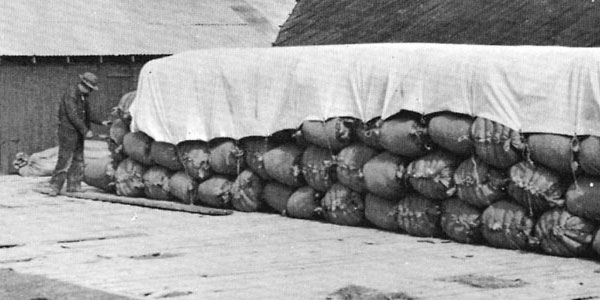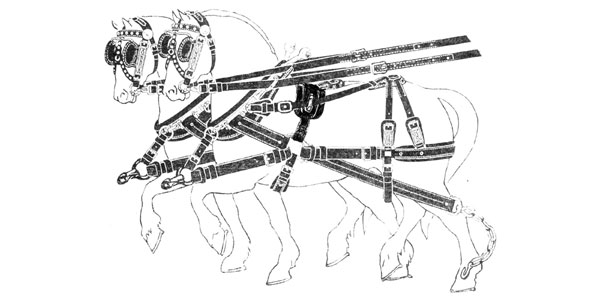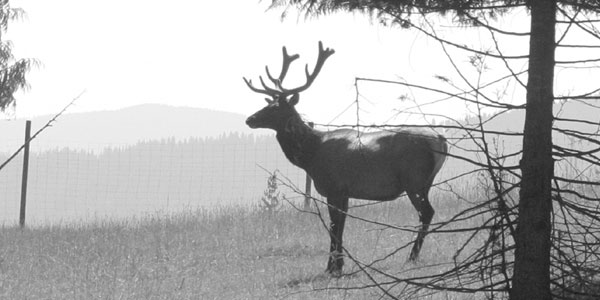
The Big Brown Swiss Cow and Her Attributes
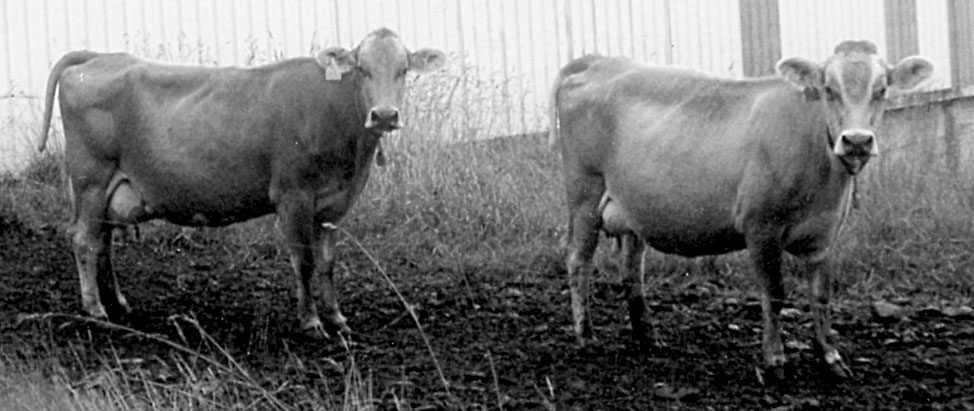
The Big Brown Swiss Cow and Her Attributes
by Elena Johnston of Tillamook, OR
A BRIEF HISTORY OF THE BREED
All cattle breeds (and most other livestock for that matter) are categorized into “groups of similar breeds,” with the exception of rabbits, buffalo and asses. For example, the Holstein/Friesian cow, the Whitebelted cow and the Whiteheaded cow would fall under the black and white pattern group. Under the red pattern group would fall the Red Pied cow, Simmental cow and Hereford cow. The Brown Swiss cow falls under the Brown group along with the Alpine Brown and the British Brown cow. The Brown Swiss group includes approximately 25 “breeds” from just about every country in Europe, with each having its own local and international name. In France there is the Aubrac and the French Brown. In Italy there are five different breeds of Brown Swiss, each adapted to its own region. It has been speculated that the Swiss Braunvieh is one of the oldest or original breeds of cattle. In the mountains of Switzerland there were found at least 12 types of brown cattle in the 1600’s, all with a large variety of type and size, depending upon the region where they were raised. These cattle formed the basis for the modern Brown Swiss or Braunvieh. In the 19th century export was common throughout Western Europe, Russia, and other Eastern block countries as farmers bred up their local animals hoping for improvement through outcrossing. Henry M. Clark imported seven cows and one bull in 1869 to Massachusetts. These animals and others in the mid to late 1800’s formed a base for North and Central American’s Braunvieh herds. In Mexico, they flourished as a primarily beef animal. It was not until 1880 that an official herdbook was established in the United States. Live animal importations were stopped in 1906 because of fear of hoof and mouth disease. Brown Swiss semen is, however, still available from European breeders. So, as with most breeds of livestock, the big brown cow came to North America and has become an established and well-loved part of many family dairy operations.

CHARACTERISTICS AND USES
The Braunvieh cow has always been a triple purpose animal. Meat, milk and draft power are all capabilities of this breed. Colors range from a light silver to gray to brown with various coloration along the back, legs and head. White spots are to be reported to the breed association. Black hooves are the rule, and for good reason, as the Swiss is known for her hard, sturdy, and long lasting feet. Large ears, a thick hide (as you may attest if you have IV’d very many!), and big eyes all contribute to her ability to withstand heat/cold, and in her characteristic strong herd instinct. The average female at maturation will weigh around 1200-1500 lbs. and the male up to 2500 lbs. The Brown Swiss is a late maturer. While bulls may be able to breed at a young age, the female may continue to grow until six years of age, which translates into the possibility of a later age at first calving. We have had heifers never show a heat until almost two years of age. We have also had them calve at 24 months alongside Jerseys and Holsteins. Each animal is different. These cattle are known for their docile, quiet, and intelligent natures. The Brown Swiss breed as a whole averages around 21,000 pounds of milk in a 305-day lactation. They also have a high cheese yield because of their high fat to protein ratio. It has also been noted that of all the dairy breeds, the Braunvieh cow produces milk that is naturally homogenized. It is not that the cream will not rise at all, but the fat molecules are smaller, making the milk easier to digest. Studies have also proven that these cattle have a higher amount of conjugated linoleic acid (CLA) in their milk and less lactose than other dairy breeds. CLA content in the human diet is said to be very important for good health. Overall, if carefully bred and fed a diet of good homegrown feed, the Brown Swiss cow will last many years, produce a superior milk, and bring much enjoyment to the dairy farm.
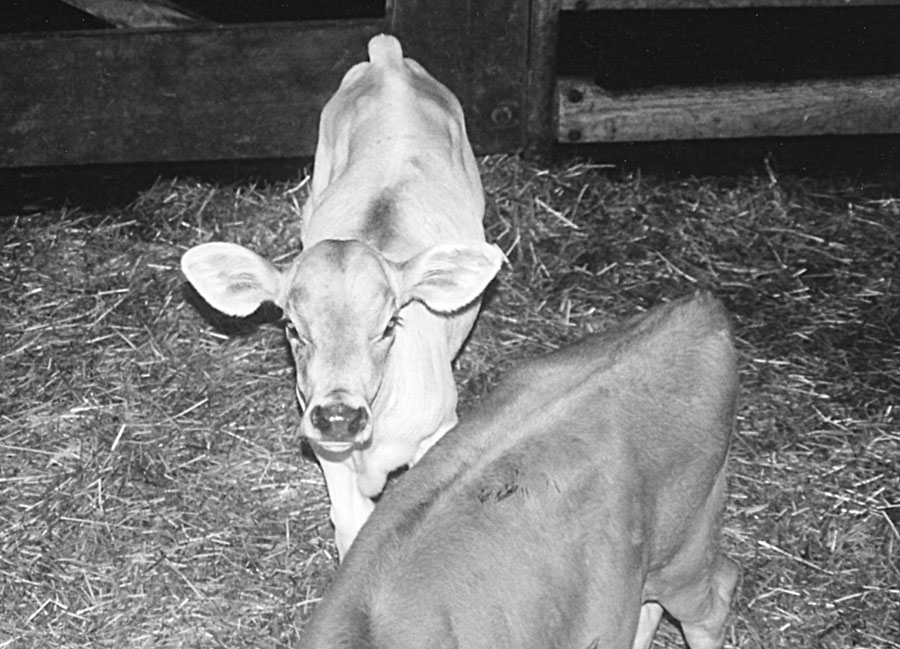
RAISING CALVES
Probably the most common complaint heard about the breed in general is that the calves are “hard to raise.” I would argue against that statement till doomsday. Spending a year in Germany on a Brown Swiss dairy farm taught me many things. A great love for this breed was foremost! Secondly, I was taught that they (starting as calves) will tolerate no rough treatment. These calves cannot be held down, have milk tubed down their throats, etc., as is common practice on many farms when a calf “won’t eat.” Here’s the secret! Much like a colt that is imprinted at birth, the Swiss calf should be handled as soon after birth as possible. Gently rub her all over with circular motion (much as the mother cows licks her baby), and let her smell your scent. If you have had trouble in the past, don’t let the calf suck on the cow, but milk her and feed the calf by hand from the start. Personally, I prefer to let the calf suckle the mother in the first hours after birth.
The cow also needs the stimulation in order to clean her afterbirth and to come strongly into milk, as she should. If the baby has a good bellyful of colostrum she may not need to be fed for another 16 hours or so. Say for instance that the calf is born in the morning and allowed to remain on the cow until afternoon or evening, you may try to feed the calf the next morning and have some resistance. Don’t fight the calf! If he will not latch onto the bottle within a few minutes, leave him until evening. It won’t hurt him, and he WILL be hungry! Again, as you get him on the bottle (a bottle is preferred over a “sucker bucket” as it allows the calf to suckle naturally), rub his head, back, and chin/neck with a circular motion such as a cow licking. This will stimulate the calf to suck and pretty soon his tail will be wagging, and the bottle will be empty. Don’t be afraid to feed the Brown Swiss more than two quarts in a feeding. Let me clarify that we feed whole milk, not replacer. I would not recommend these feeding rates with milk replacer, unless bumped up slowly over a period of time.
These are large calves, and it takes a lot of energy to keep them gaining weight and staying healthy. I start my calves off with three quarts per feeding and work them up to a gallon morning and night. Some folks like to get a baby drinking out of a bucket as soon as possible, but I prefer (especially with the Swiss and Jersey calves more than Holsteins) to let them suckle for about a month. The sucking action produces saliva which is necessary for digestion and the development of the stomachs. Yes, it takes a little longer than dumping milk in a bucket, but the time is well spent if the calf is healthy and aggressive.
In the interest of healthy calves I add raw apple cider vinegar and powdered garlic (brand name Conlic, available at some feed stores) to their milk, at a rate of 1-teaspoon vinegar and ½ teaspoon garlic per calf per feeding. This will prevent scours, keep their coats shiny, and keep the calf in overall good health. As the calf grows, offer a good grass hay, a little grain (with some vinegar sprinkled on it), and, of course, clean water especially on hot summer days. Calves can be weaned anytime between 60 and 120 days. The longer the better!!
One side note on Swiss calves is that they are often born with their feet “knuckled under.” This will usually resolve itself within a couple of weeks, and the ankles will straighten out on their own. It is important to imprint the calves when young, but not to make them pets. After being weaned, it is best to leave them alone until about six months old, when they can be tied up and halter broke. This is invaluable training later on in life! Once halter broke, leave them alone until calving. Making pets out of them will produce more harm than good, and can, in fact, cause dangerous behavior. NEVER pet or stroke a young or mature cow on the forehead or poll. This will cause her to become mean and aggressive. If you want to love on them, always rub the neck, chest, back or belly. Teach your animals manners, such as always keeping their head up (so as not to butt) and respecting you when the love session is over. The Brown Swiss cow will be gentle with not much handling, as it is her instinct. There are of course exceptions, and this must be taken into consideration. If your farm is small or large and there are children around, it never pays to keep mean or aggressive animals whether it be cattle, horses, hogs, etc.
BREEDING
Hans Leuthold, an old timer whom we greatly respected and who was a wonderful friend and fellow Braunvieh lover advised us about ways to pick good bulls for our cows. We use artificial insemination, which frees our minds from the worry of having a bull around the farm. We know too many people who have been killed or maimed by dairy bulls. It also allows us a vast selection of genetics from which we can choose. Hans gave us these rules. Don’t even look at a Swiss bull with less than a 3.6% protein test. A high protein level is a breed trait, and trying to make more milk (like the commercial dairyman wants) only messes up the natural proportions of the milk. The butterfat percentage should also be higher than the protein content for the same reason, since that is how milk is naturally proportioned. So, when we look at bull proofs, we first like to see 1000 pounds of milk or less in the PTAM column (this means the bull’s daughters average 1000 pounds of milk over the national breed average), a positive number in the PTAF (butterfat) % column, and in the PTAP (milk protein) % column. Many dairymen only look at the pounds of butterfat and protein, but it is undesirable to have the percentage to be a minus number. Compare the following two bull proofs:
54BS301 Buckeye Knoll Presto VANCE (Preston x Pete Rose x Jetway [M])
| herds/dtrs | Rel | Source | PTAM | PTAF | PTAP | PTAT | Rel |
| 18/36 | 80% | USDA | +651 | +42# +.08% | +36# +.07% | +0.8 | 83% |
54BS285 Lost Elm PRESIDENT (Ensign x Dotson x Janson)
| herds/dtrs | Rel | Source | PTAM | PTAF | PTAP | PTAT | Rel |
| 263/338 | 89% | IB-M/US | +658 | +19# -.04% | +33# +.06% | +0.6 | 76% |
Note: In the second bull proof the PTAF is a negative number and that the PTAP is 14# higher than the pounds of fat. Not a desirable trait!!!
We also look at the bull proof for the body traits listed. Udders are especially important along with body depth, dairy form, rump angle, leg set, foot angle, udder attachment, and teat placement. The Swiss cow can be “hard to breed.” In our herd, we often miss heats in the Swiss cows because they do not “socialize” much with the other breeds. Sounds funny, but it is true! We have also come to the conclusion that the time of ovulation in Braunvieh is different than in Holsteins and Jerseys. To combat this we double breed our Swiss cows and have fairly good success getting them to settle. This means breeding at 12 hours after standing heat and again at 36 hours after standing heat. Getting the cow bred as early as possible after 45 days in milk is also helpful. The longer into her lactation the harder it is to get her bred. In our herd, the average days in milk at first breeding is 79 days. Anytime after 45 days is ideal.
CROSSBREEDING
We have discovered that by crossbreeding other dairy breeds with Brown Swiss bulls, we can improve some body traits in one generation. The best example of this is foot angle and rear leg set. We have on several occasions bred Holstein cows with dewclaws that dragged the ground to Swiss bulls and got daughters out of these cows with perfect foot angle, strong legs, and tremendous body depth. They are milky and good-natured. On these crosses you can keep going back Swiss or you can cross them again with Jersey or whatever suits your fancy! Crossbreeding with a Brown Swiss bull is also a good way to get some “brains” into a cow family that might be “challenged” in the intelligence department!!
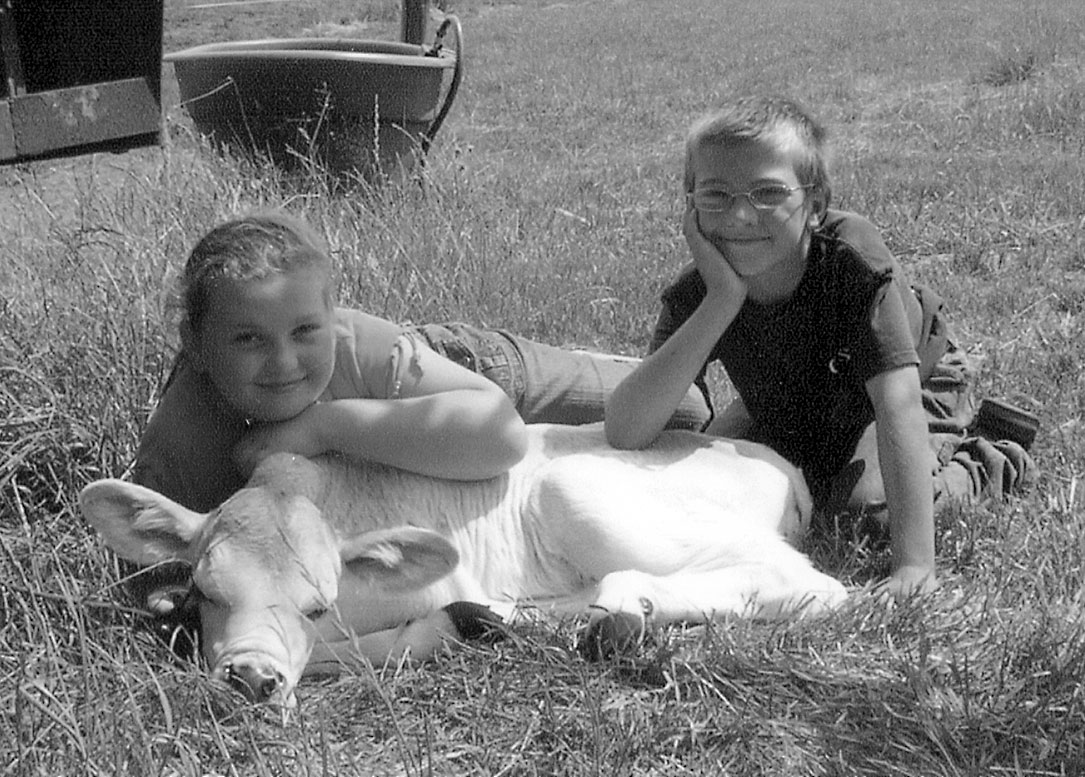
CONCLUSION
If you are looking for an intelligent, long lasting, high quality milk cow, won’t you please check out the Brown Swiss Cow?? Listed below are some links to obtain more information on the breed and resources from which I obtained some of the history and statistics used in this article. If you do buy a heifer or cow, make sure you are dealing with a reputable farm. DON’T buy at an auction; ask lots of questions; and always have a veterinarian or someone knowledgeable about dairy cattle help you look her over!!
Information used in this article was obtained from the following sources:
The Brown Swiss Association
800 Pleasant Street
Beloit, WI 53511
Phone: 608-365-4474
www.brownswissusa.com
New Generation Genetics
www.brownswiss.com
AI company specializing in Brown Swiss semen and embryos, and striving to keep breed standard high.
